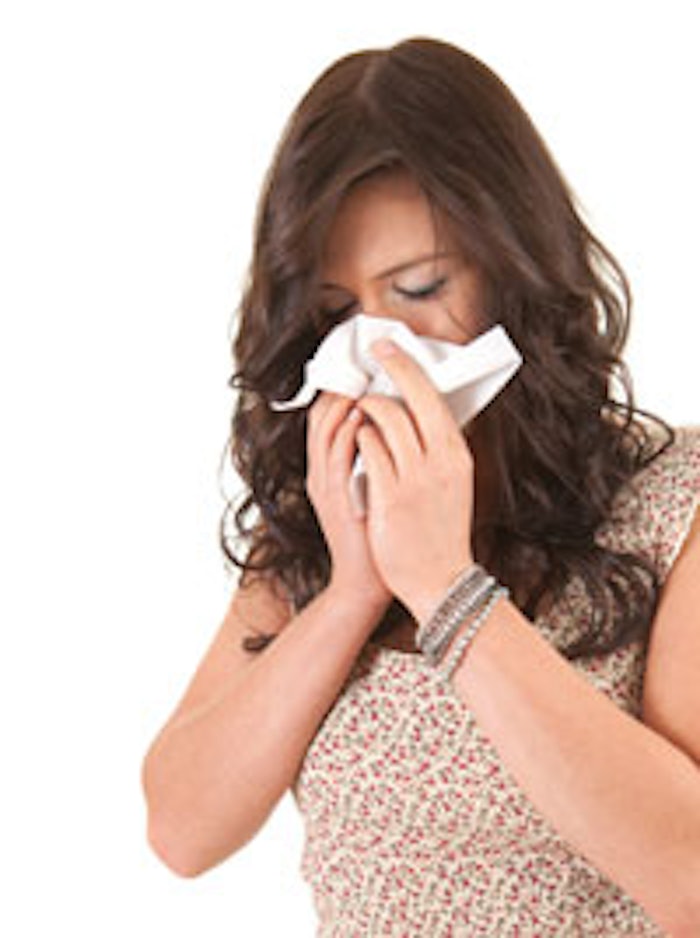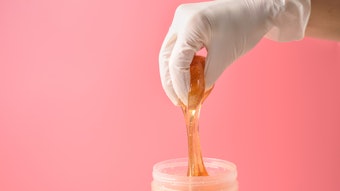
By Peter Friis, CEO and Founder, ESSIO Shower
Cold weather brings cold and flu season and a low-tech practice—the use of essential oils in aromatherapy—offers comfort for their symptoms, as well as the possibility of preventing the common bugs which cause them from getting a foothold.
Today, health practitioners still recommend the simplest possible aversion technique for protecting our health: washing hands frequently with warm water and conventional soap. In fact, the U.S. Food and Drug Administration recommends that food industry and hospital workers not substitute gel hand-sanitizers for soap and water (though it’s fine to use both). Health experts also recommend that we avoid touching our eyes, especially during cold and flu season, since microbes are easily introduced from the hands to the body’s internal systems via the conjunctiva—simply by rubbing our eyes.
The power of the breath
Essential aromatherapy oils, especially that of lavender, have been used for centuries for their mildly antiseptic properties. This was true long before human eyes ever gazed through a microscope and observed a pathogen. Yet, the word “lavender” itself relates to the word “lavare,” which means to wash, and cleanliness has been associated with health for millennia.
Inhalation of essential oils, especially in the medium of steam, can break up congestion of the sinuses and nasal passages and ease the inflammation of the nasal lining and throat. Breathing in micro-particles of essential oils of eucalyptus and peppermint is are beneficial in particular.
Traditional herbal medicine has long relied upon the powers of essential oils. A classic example is the oil of the eucalyptus in the healing traditions of South Asia and Australia, and more recently the West. Like many essential oils, eucalyptus oil offers relief from many common maladies in multiple synergistic ways. This aromatic botanical has been proven to have antibacterial, antifungal, and antiviral properties, which help to sanitize and disinfect in order to prevent microbes from taking hold.
But this oil offers subtler, long-term benefits as well, which help to reinforce the oil’s immediate effects. These more holistic effects include smooth-muscle relaxation, antioxidant activity, mucus-thinning, immune stimulation and support, and anti-inflammatory action to ease the symptoms of respiratory ailments including bronchitis, asthma and sinusitis.
In many parts of Europe and the United Kingdom, aromatherapy is not considered alternative medicine in the rather dismissive sense that this term is used in America. Researcher and author Dominique Badoux, president of Natural Aromatherapy Research and Development and publisher of the newsletter Aroma News, offers many intriguing insights into the antiviral and antimicrobial properties of essential oils at his website, www.aromabar.com. Heralding France as the leader in modern aromatherapy, Badoux’s articles such as “Antiviral and Antimicrobial Properties of Essential Oils” provide a detailed yet accessible understanding of the molecular chemistry of oils commonly used in therapeutic formulas.
Menthol, found in peppermint and spearmint, has a centuries-long history in easing breathing difficulties, validated by many abstracts published on Pub Med, the database of the National Institutes of Health (NIH) for peer-reviewed journal articles (www.pubmed.gov). Menthol, like many essential oils, works in multiple ways to ease respiratory distress. The astringent properties of this botanical alcohol shrink inflamed tissues, allowing for easier breathing and swallowing. But the primary benefit is a sort of body-brain illusion, experienced as a refreshing, cooling sensation. Menthol chemically triggers special temperature sensors, proteins known as TRP channels, located in the epithelial cells of the nasal lining. Because menthol “tricks” these sensors into registering a flow of chilly air, the nose in essence convinces the brain that it is no longer congested (seewww.mudphudder.com for more detail). This remarkable effect makes enduring the common cold more comfortable.
Other essential oils identified in these sources as anti-viral, as well as anti-bacterial, include geranium, petitgrain, thyme and rose. Two 80s-era preventive treatments—massive doses of vitamin C, and zinc tablets—have recently been broadly exposed as ineffective in both preventing colds and easing their symptoms. While the benefits of essential oils in aromatherapy remain largely undocumented by conventional science, the time-honored practice of aromatherapy is growing in prominence as allopathic medicine fails to effectively prevent or treat cold and flu.
What makes us sick: Virus vs. bacteria
The specific organism which causes the common cold is almost always a virus—not a bacteria—and medical authorities estimate that approximately 200 rhinoviruses can cause similar, familiar symptoms.
Colds and flu are both caused by viruses. A flu infection is a far more serious viral infection, potentially fatal to anyone with a disabled immune system, or someone who is simply vulnerable, such as an elderly person or a newborn baby. But it is often a secondary bacterial infection which poses the greatest threat to flu-sufferers.
Bacteria does play a role in the symptoms we associate with cold and flu. Although the initial infection that causes a cold is due to a virus, the symptoms that can be attributed to virus infection only last a couple of days. Colds can last a week or two, because damaged cells in the airways become susceptible to a secondary infection by bacteria already present there.
In defense, the body produces the protective mucus that causes the misery of sneezing (the body’s attempt to expel the predators), blocked nose and a constant cough. Body temperature may rise, producing fever, in further attempts to fry the invading colonies of pathogens. Mucus production continues until the body becomes immune to the virus, and the cells in the airways regenerate a tougher outer layer that is no longer open to bacterial attack.
Prevention: How far have we really come?
Once the leaves start to turn and the frost is on the pumpkin, it seems that every clinic and drug store chain in town advertises flu shots. Here’s the catch: With approximately 200 rhinoviruses currently in circulation, it is impossible to create a vaccine which addresses all of them.
Another caveat: Antibiotics, the wonder-drugs of the 20th century, rarely are effective against cold and flu. Many health experts advise against taking antibiotics to shorten the bacterial aftermath of a viral infection, since doing so may build resistance to the future effectiveness of these drugs.
To help: Take more showers
Why do we call colds “colds”? A drop in temperature, per se, isn’t exactly the problem. For instance, being exposed to a chill, or leaving the house with wet hair won’t make you more likely to get sick. However, cold weather is generally accompanied by a drop in humidity, and this dryness depletes the protective linings of the nose and throat, allowing rhinoviruses to colonize and replicate more easily.
Also, chilly weather drives people indoors. This means shared air and shared surfaces, not unlike a long duration in the cabin of an aircraft. Clean hands, enhanced by the mild antimicrobial action of essential oils, may be among the simplest, yet most effective of preventive measures.
With this in mind, the experience of gently inhaling steam can help to maintain our nasal linings. A warm shower, especially one diffused with 100% USDA organic essential oils, hydrates these tissues and may prevent infection. In addition, certain essential oils such as peppermint have been proven to deliver mild analgesic effects, and can calm inflammation in the nose and throat.
Last, and least only because of lack of empirical evidence, is the role which essential oils have played for thousands of years in stress-reduction. Stress, like mood, is loosely defined. However, centuries of anecdotal history suggest that when diffused into a daily steam-treatment and massage, essential oils release tension and in this way may support healthy immune function. And, the easiest way to integrate the benefits of essential oils into daily wellness is as close as the home shower.










